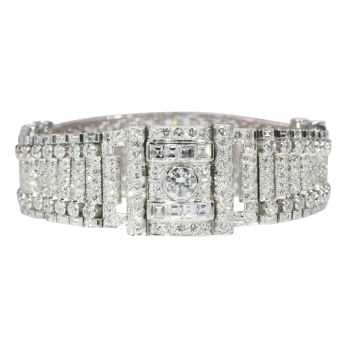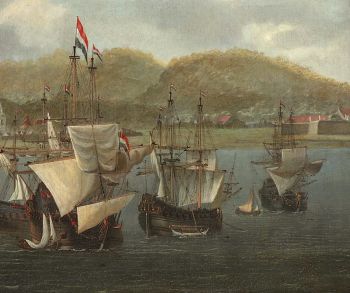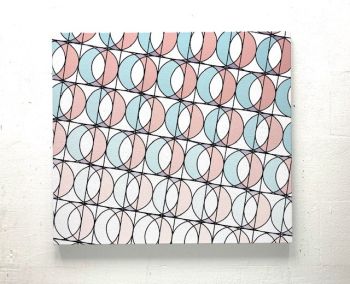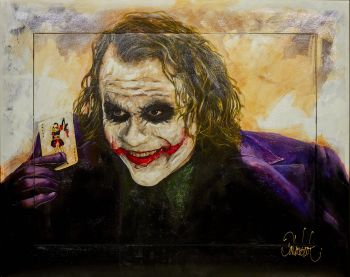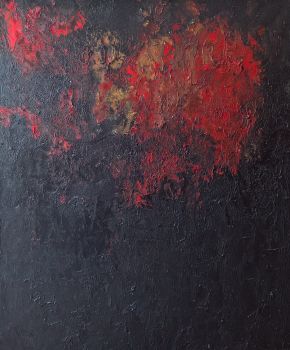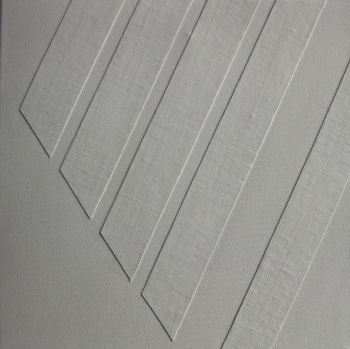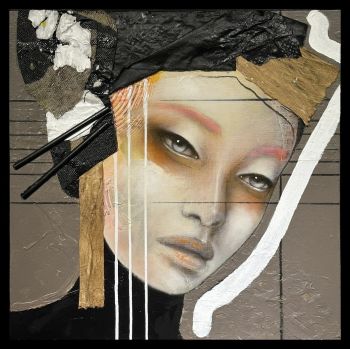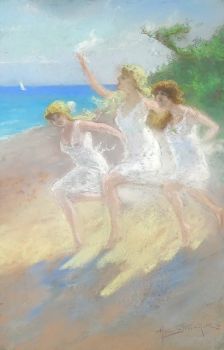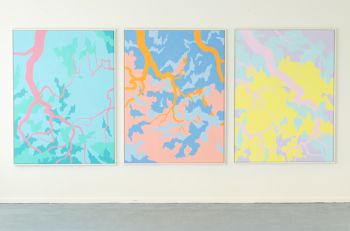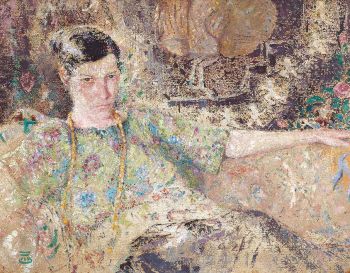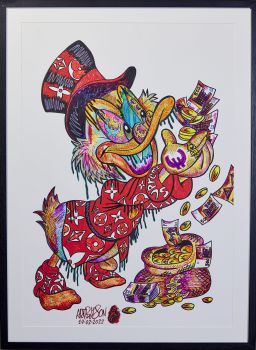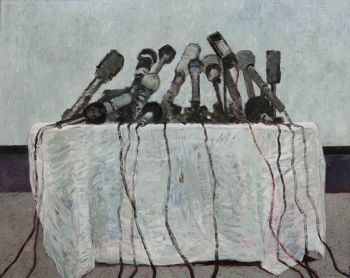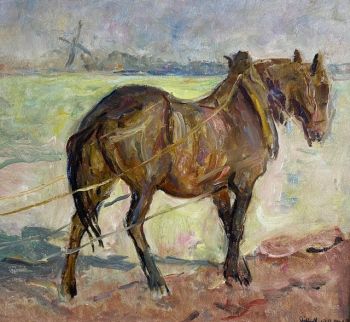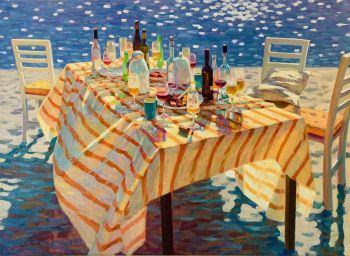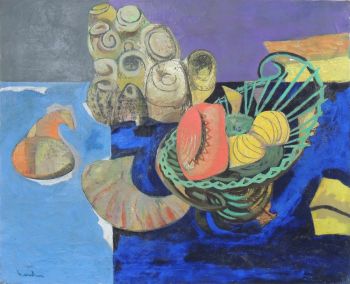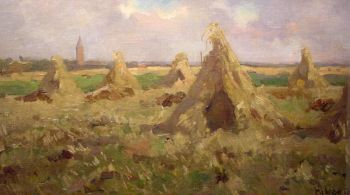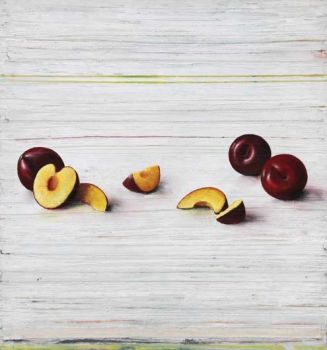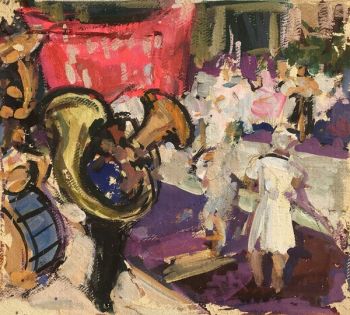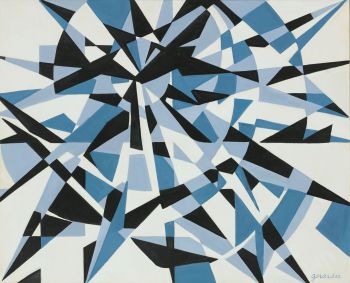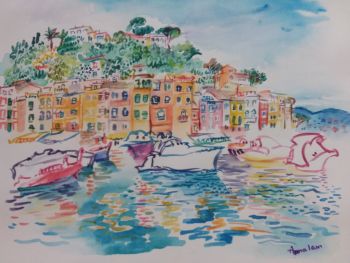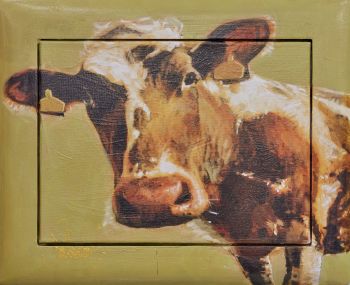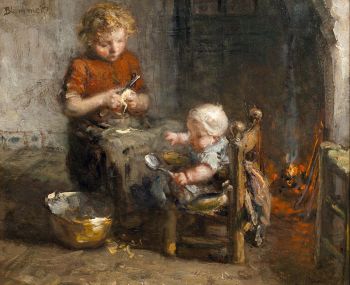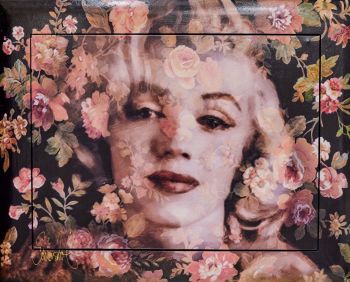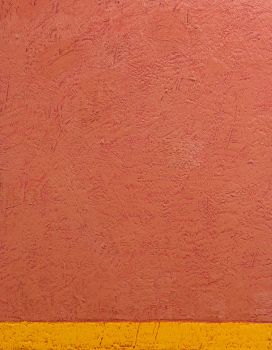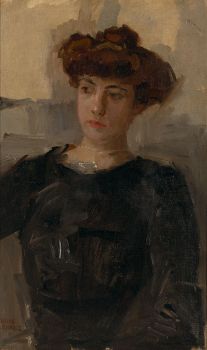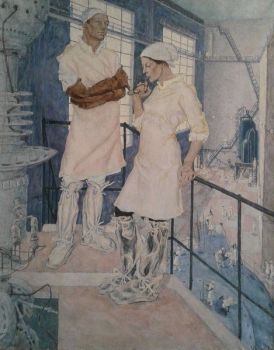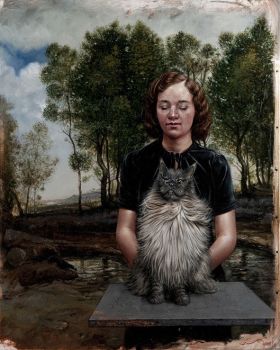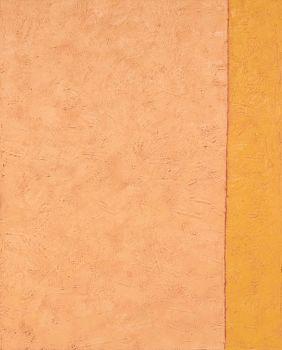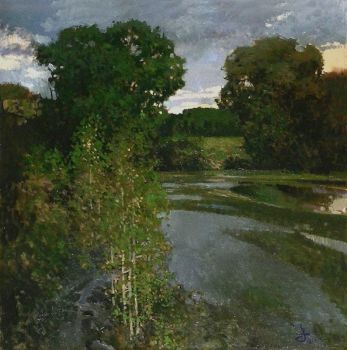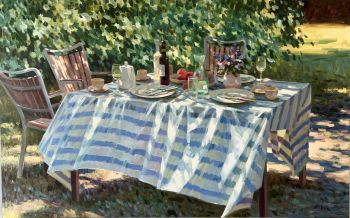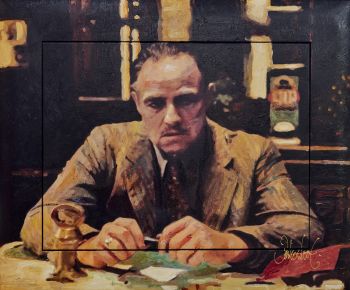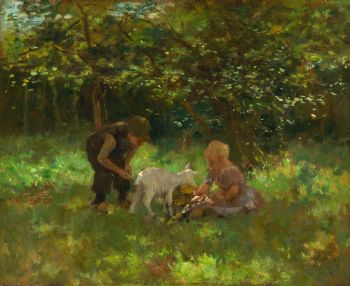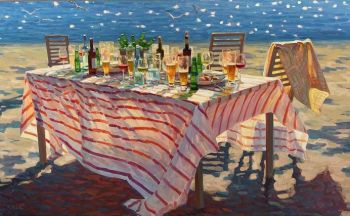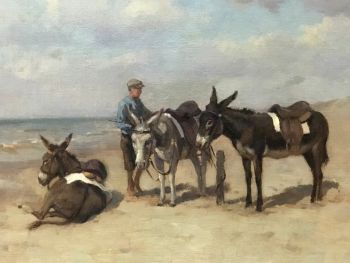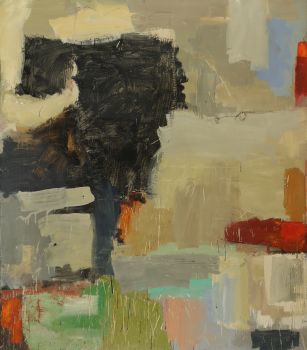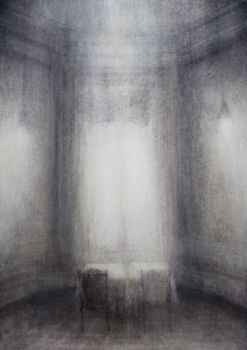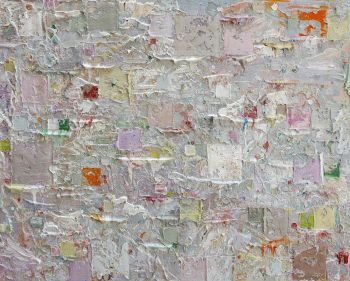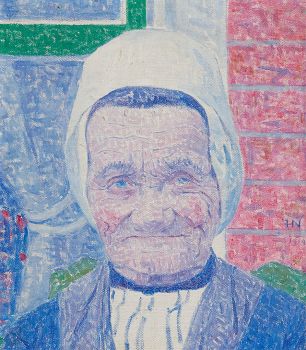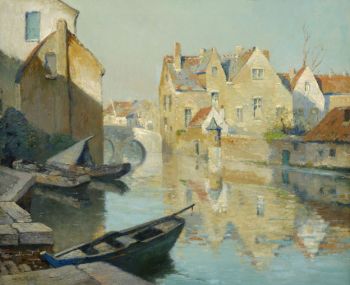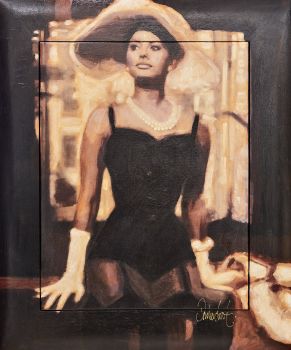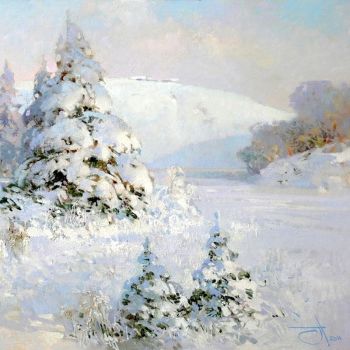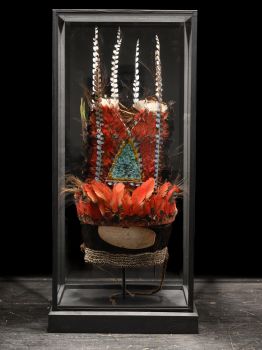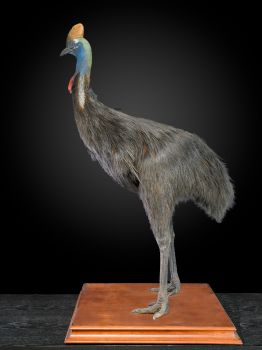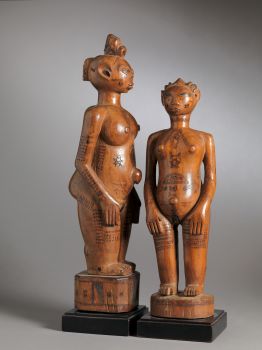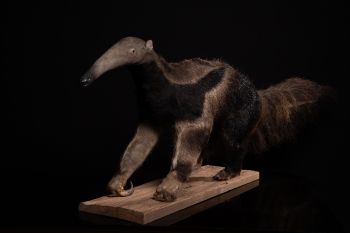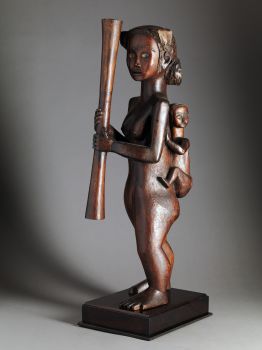16th C Portraits of Sultans Murad III (1546–1595) and Isa Celebi (died in 1403), identities inscribe 1580 - 1600
Artiste Inconnu
Huile sur toile originale
95 ⨯ 76.50 ⨯ 2.90 cm
ConditionVery good
€ 96.000
Spectandum Gallery
- Sur l'oeuvre d'artThe capture of Constantinople in 1453 by the young Mehmed II ("The Conqueror") not only sparked this interest, but the young sultan himself, who invited European painters to his court, also fueled this trend. The period following his reign saw relations between the Republic of Venice and its powerful neighbor reach a state of relative calm, initiating a period of exchanges and trade. Situated at the crossroads of East and West, the Ottoman Empire absorbed a wide range of influences, including Chinese, European, and Persian, to produce a distinctive and cohesive artistic language across a range of decorative arts with elements both rococo and baroque, marked by an increasingly open attitude towards all things European. The production of Orientalist paintings is rich in topographical landscapes of Istanbul, genre scenes, and portraits of notable Ottomans.Europe's fascination with its powerful Muslim neighbors inspired a wave of narratives and paintings about the Ottoman world. The two portraits of Sultans Murad III (1546-1595) and Isa Celebi (died in 1403), depicted in three-quarters view and wearing large turbans and richly embroidered cloaks, were directly influenced by the paintings of Paolo Caliari, called Paolo Veronese. The original series of fourteen portraits of Ottoman sultans by Veronese inspired the creation of several painted decorations between the late 16th and 19th centuries. The paintings served as significant diplomatic gifts.
A complete set, executed by one of Veronese's disciples, is now in the Collection Bayerische Staatsgemäldesammlungen, Munich (inv. No. 2243) (R. Kultzen and P. Eikemeier, Venezianische Gemalde des 15. Und 16. Jahrhunderts, Bayerische Staatsgemäldesammlungen, Munich, 1971, pp.236-9). It is worth noting a set of portraits kept at the Topkapi Palace in Istanbul, which were shipped from Venice to Istanbul in September 1779. They were most likely the result of a request from the Grand Vizier Sokollu Mehmed Pasha, who wished to establish a local genealogy of the Sultans, to Niccolò Barbarigo, the Venetian ambassador to Constantinople, for such works. Paolo Giovio (1483-1552), the Italian historian and biographer, is also known to have owned a series of portraits of Ottoman sultans that he commissioned based on a group of miniatures that Barbarossa, the admiral of Suleiman the Magnificent, offered to a French commander in gratitude in 1453. Only one painting from this series still exists, depicting Sultan Mehmed I (now in the Archaeological Museum of Como). In addition to the complete sets in Munich and Istanbul, at least two fragmentary sets of sultan portraits exist in the Topkapi Palace. Literature :
F.Çağman, "The Sultan's Portrait: Picturing the house of Osman", Topkapi Palace Museum, Istanbul, June 6-September 6, 2000, Istanbul, Işbank, 2000). https://www.sothebys.com/en/buy/auction/2022/royal-noble/the-newbattle-turks-a-set-of-6-historical - Sur l'artiste
Il peut arriver qu'un artiste ou un créateur soit inconnu.
Certaines œuvres ne doivent pas être déterminées par qui elles sont faites ou elles sont faites par (un groupe d') artisans. Les exemples sont des statues de l'Antiquité, des meubles, des miroirs ou des signatures qui ne sont pas claires ou lisibles, mais aussi certaines œuvres ne sont pas signées du tout.
Vous pouvez également trouver la description suivante :
•"Attribué à …." A leur avis probablement une oeuvre de l'artiste, au moins en partie
•« Atelier de …. ou « Atelier de » À leur avis, une œuvre exécutée dans l'atelier ou l'atelier de l'artiste, éventuellement sous sa direction
•« Cercle de… ». A leur avis une oeuvre de la période de l'artiste témoignant de son influence, étroitement associée à l'artiste mais pas forcément son élève
•« Style de … ». ou "Suiveur de ...." Selon eux, une œuvre exécutée dans le style de l'artiste mais pas nécessairement par un élève ; peut être contemporain ou presque contemporain
•« Manière de… ». A leur avis une oeuvre dans le style de l'artiste mais d'une date plus tardive
•"Après …." A leur avis une copie (quelle qu'en soit la date) d'une oeuvre de l'artiste
•« Signé… », « Daté… ». ou « Inscrit » À leur avis, l'œuvre a été signée/datée/inscrite par l'artiste. L'ajout d'un point d'interrogation indique un élément de doute
• "Avec signature ….", "Avec date ….", "Avec inscription …." ou "Porte signature/date/inscription" à leur avis la signature/date/inscription a été ajoutée par quelqu'un d'autre que l'artiste
Êtes-vous intéressé par l'achat de cette oeuvre?
Artwork details
Related artworks
Artiste Inconnu
GRANDE PEINTURE INDIENNE IMPORTANTE ET RARE `` STYLE D'ENTREPRISE '' SUR IVOIRE REPRÉSENTANT UN DÉFI1850 - 1900
Prix sur demandeZebregs & Röell - Fine Art - Antiques
 Sélectionné par
Sélectionné parDanny Bree
1 - 4 / 12Marcel Jefferys
Jeune femme au collier dans un intérieur1890 - 1922
Prix sur demandeStudio 2000 Art Gallery
1 - 4 / 24Isaac Israels
"Een essayeuse bij het modehuis Hirsch"1865 - 1934
Prix sur demandeStudio 2000 Art Gallery
1 - 4 / 24- 1 - 4 / 9


















